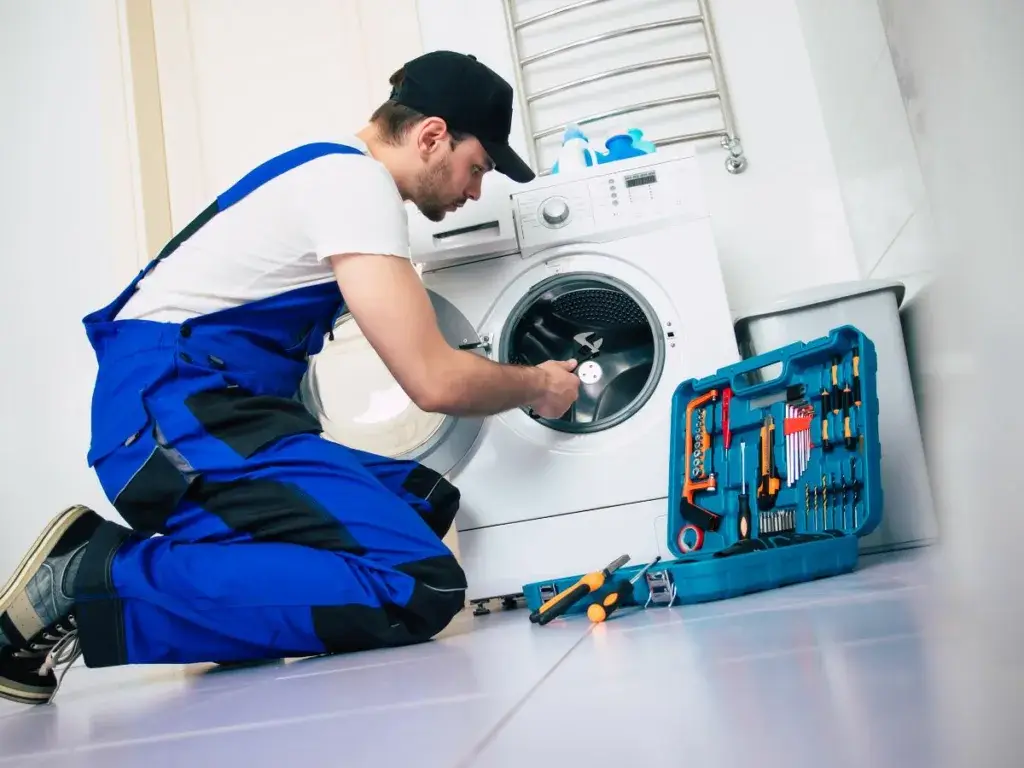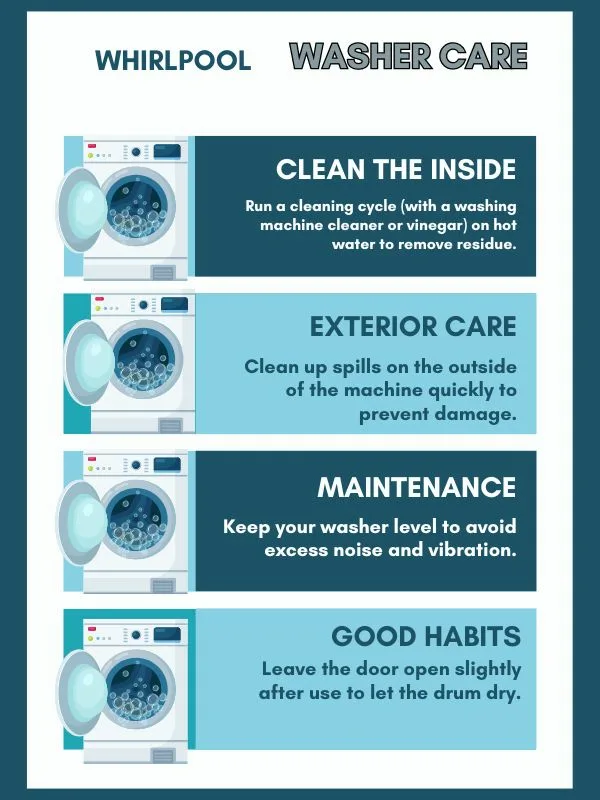
Dealing with a faulty appliance never feels good. When your trusty Whirlpool top-load washer won’t start or refuses to fill with water, don’t let the laundry pile up in despair! Arm yourself with some troubleshooting knowledge, and you might be surprised at how many common washer woes you can handle yourself.
Understanding the Culprits: Why Washers Misbehave
Let’s explore some frequently encountered reasons behind washer problems:
- Power Problems: Verify your washer’s connection to a working outlet. A simple tripped breaker or a damaged cord can be the root of the issue.
- Lid Switch Snafus: If the lid doesn’t close perfectly, most Whirlpools won’t start. Check for proper closure, listen for the engaging ‘click’, and rule out any obstructions.
- Water Woes: Your washer needs proper water flow. Ensure hot and cold supply valves are open, inspect hoses for kinks, and keep the inlet screens clean.
- Control Panel Confusion: Faults in the control panel, the washer’s command center, can cause all sorts of unexpected behavior.
- Mechanical Mishaps: Although less common for the DIY enthusiast, issues like a faulty water inlet valve or a broken drive belt can also lead to a nonfunctional washer. These often warrant professional attention.
Troubleshooting Tactics: Your Step-by-Step Guide
The Power Probe: Unplug your washer, check for tripped breakers and any signs of damage to the power cord. Reconnect and try restarting.
Lid Lockdown: Examine the lid switch and its surrounding area. Remove any obstructions to ensure it properly engages when the lid is fully closed.
Water Supply Sleuthing: Open those supply valves! Untangle any kinks in your water inlet hoses and clean the inlet screens where the hoses connect to the washer.
Control Panel Check-Up: If the power and lid switch are in order, attempt different cycles on the control panel. No response or inconsistent behavior points to a possible control panel malfunction.
The DIY Toolkit: Tackling Fixable Issues
- The Power of the Reset: Unplug your washer for a couple of minutes. This basic reboot can sometimes resolve minor electronic hiccups.
- Screen Savers: Regular cleaning of those inlet screens can prevent blockages and ensure proper water flow. Your future self will thank you!
- Lid Switch Swap-Out: If you find the lid switch has a fault you should consult online resources can often provide model-specific instructions for a simple replacement.
- Calibration Conundrum: Your washer’s manual may offer steps on control panel recalibration. This can reset certain settings and potentially solve strange behavior.
- Beyond the Basics: Problems like faulty timer mechanisms, worn out motor coupling
Calling in Reinforcements: When to Seek Help
you should call us if the following problems are evident
Don’t hesitate to enlist the help of a qualified appliance technician if you’re facing any of these scenarios:
- Persistent problems after your troubleshooting attempts.
- Suspected internal component failures.
- complicated electrical issues with the control panel or wiring.
- Unusual noises or leaks from the machine.
preventative care - take care of your appliances
A little routine maintenance goes a long way in keeping your washer running smoothly:
- Lint Trap TLC: Clean that lint trap regularly to avoid unnecessary strain on your machine.
- Sensible Loads: Don’t overstuff! Follow the manufacturer’s guidelines on load size.
- Detergent Deciphered: Use HE (High-Efficiency) detergent and stick to the recommended amounts.
- Let it Breathe: Leave the lid slightly ajar between uses to promote air circulation and prevent musty odors.
Closing Thoughts
Remember, diagnosing and resolving common washer problems can be empowering. By following this guide, you may find yourself saving time, money, and a whole lot of laundry-related headaches. Always prioritize safety and consult a professional when in doubt!

